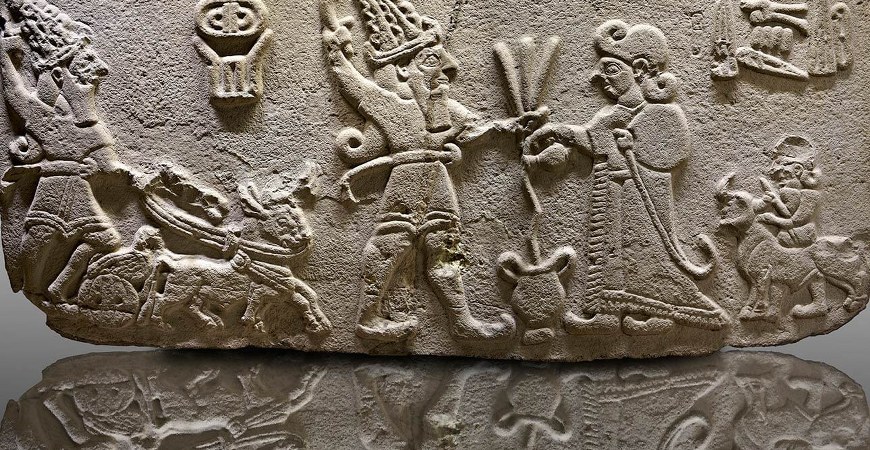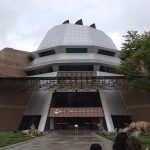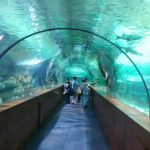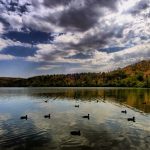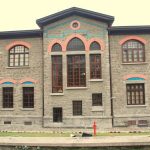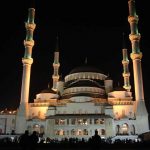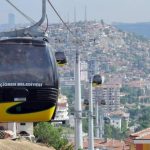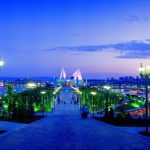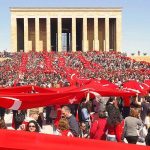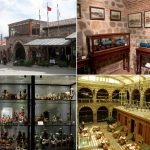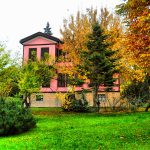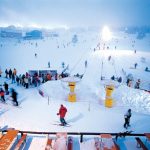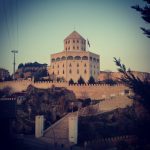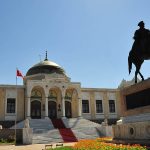The Museum of Anatolian Civilisations
The stone works in the central hall were brought from centers of the Hittite Empire and the Late Hittite Period, such as Alacahoyuk, Aslantepe, Karkamis, and Sacagozu. There are also bas-reliefs from the Ankara region which belong to the Late Hittite and later periods. The exhibits in the side rooms are arranged as follows: Palaeolithic Age: Remains of Paleolithic culture in Anatolia are found on the river banks, seashores and in caves around Ankara, in the region of Maras and Hatay, the Central Black Sea region, Trakya, Isparta, and Antalya. The most important of these centers is the Karain Cave which is situated on the limestone skirts of Damascus Mountain 27 km. northwest of Antalya. There is a case displaying examples of findings from this period. Neolithic Age: This Age, which lasted until 7 thousand BC in Anatolia, is represented by objects from the centers of Catalhoyuk and Hacilar.
A full-scale model of a room discovered in Catalhoyuk has been built in the Museum, and in the showcases are exhibited works found in Catalhoyuk and Hacilar near Burdur. Among these are figurines of women made of pottery and various stones, and representing the Mother Goddess.
Some objects in the Museum of Anatolian Civilisations There are also tools made of flint and obidian, plain colored pots and bowls of several shapes, seals and ornaments. Chalcolithic Age: This age is of particular interest because it is the period when metal instruments began to be made as well as those of stone, bone, and wood. Objects dating from this period have been found in many barrows in Anatolia. Objects uncovered by excavations at Hacilar, Canhasan, Alisar, Alacahoyuk, and Tilkitepe are exhibited in the Museum.
Old Bronze Age: From the year 3 thousand BC onwards objects began to be made of various different metals in Anatolia. Objects made of copper, lead, tin, silver, and alloys of copper/tin (bronze) and silver/gold (electron) were made. Important findings of the late period of this age are the graves of kings or princes found in Alacahoyuk and Horoscope. Although of simple construction, these graves contain extremely valuable death offerings. Among these are bronze and electron statues representing the Mother Goddess, symbolic sun-shaped discs, statues of bulls and deer, gold and silver vases and drinking cups, ornaments, and every kind of scepter and weapon, showing the high degree of craftsmanship attained in the working of metals. Assyrian Trade Colonies Age: Around 2 thousand years BC Anatolia was one of the most prosperous and developed areas. This prosperity dated back to 3 thousand BC. Led by the Assyrian State, the Mesopotamians entered into extensive trade relations with Anatolia, which led to the introduction of writing to this country and thus Anatolia entered the Historical Age. The places that the merchants founded, traded with and lived in are called Karum. There are nine Karums in Anatolia, which was under the administration of the Head Karum in Kanis in Kultepe, which is near Kayseri.
Hittite and Late Hittite Age:
After the Assyrian traders left Anatolia, the Hittites established sovereignty over Anatolia and united the city-states into a political union. The Early and Late Hittites Ages lasted from the 17th Century BC to the 7th Century BC. In this section of the museum are exhibited the findings of excavations at Bogazkoy, Alacahoyuk etc. Phrygian Age: The Phrygians appeared in Anatolia after the Hittites. They established sovereignty over an area stretching from Afyon in the west to the inner bend of the Kizilirmak River in the east. Findings from the important Phrygian city of Gordion are displayed in the showcases.
Urartu Age:
The Urartu State was a powerful state in Anatolia in the first quarter of the first thousand years BC. The graves of the Urartus, who were skilled stonemasons, were in the form of houses. Their workmanship in gold, silver, bronze, and ivory was very advanced. During this period the metal goods made by the Urartus became the fashion, and statues of people and animals, and decorated bronze pans were exported to Italy, Greece and inner Phrygia. This state, which used cuneiform and Urartu picture writing, proved unable to withstand the upsurge of the Isket Medians in the 6th Century BC and was defeated.
Eastern The findings of the archaeological excavations carried out in various Urartu centers in Eastern Anatolia are on display in the Museum.
Coins and Gold Ornaments:
There are several showcases displaying coins, and treasure from the pre-Islam and Islamic periods, and gold ornaments from various periods.

